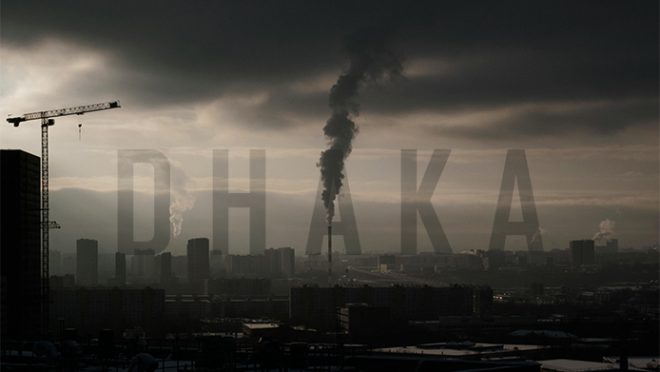Air pollution: Are we destined to suffocate?
Air pollution: Are we destined to suffocate?

Have we gotten so used to living in a polluted environment that we even fail to acknowledge the effects of air pollution on our health?
The entirety of Bangladesh has been suffering but perhaps Dhaka is getting the worst of it. It doesn’t help that Dhaka hosts a staggering number of 2.39 crore people in its tiny area, making it one of the most densely populated places in the world.
Whether it’s land pollution, sound pollution or water pollution, Dhaka is ever the victim. But none of these are as severe as air pollution in the capital city.
Almost every day, Dhaka takes the first place on the list of the cities with the most polluted air on the Air Quality Index (AQI). When it’s not taking the undesired first place, it’s still amongst the top 10, constantly holding its place. In fact, Dhaka started 2024 with the worst air quality in the world. And air quality has not been improving. Unfortunately, the way things appear at the moment, it’s unlikely to do so anytime soon.
Dhaka frequently scores above 150 on the AQI scale, making its air “Unhealthy”. When this happens, People with respiratory disease, such as asthma, should avoid outdoor activities; everyone else should limit prolonged outdoor exposure. This means people who are outdoors for longer hours due to their livelihood or other reasons run a high risk of adverse health effects. People who already suffer from some sort of respiratory condition may face very serious effects.
According to the International Centre for Diarrheal Disease Research, Bangladesh (icddr,b) website, almost 100% of the Bangladeshi population live in areas exceeding the safe air standard prescribed by the World Health Organisation. Air quality in Bangladesh continues to deteriorate.
PM or particulate matter is an air pollutant unit. It refers to particles in air and they can vary in size, shape and chemical composition. According to the World Air Quality Report 2023, Dhaka’s air had more than 16 times the PM2.5 (fine particles or droplets with 2.5 microns or less in width) permissible under the WHO’s annual guideline.
Particulate matters of this size have been linked to asthma, cancer, heart and lung disease and other respiratory illnesses.
Overall, breathing polluted air can cause inflammation, oxidative stress, immunosuppression, and mutagenicity in cells throughout the body. This in turn, affects the lungs, heart and brain leading to other health issues. Stroke, ischemic heart disease, pulmonary disease, lung cancer, pneumonia are just a few of the wide variety of diseases caused by air pollution. World Health Organization (WHO) says air pollution kills an estimated seven million people worldwide every year.
Yet this is not the shocking part. The most shocking part is that Dhaka continues to rank worse and worse regularly and no one bats an eye. It’s almost as if this is the new normal? Which begs the question- when will something be done to improve Dhaka’s air quality because there’s very little room left for how much worse we can suffer.
Very little has been done to improve the air quality and barely anything of effect has been noticed so far. The unfit vehicles roam Dhaka’s roads without a second thought, the industries and brick kilns cover the sky in dark smoke, unplanned construction works and incineration of waste also takes a part in this slow decimation of the city.
Journalists keep writing regularly and for a while people used to discuss this as a serious issue but now it’s become a regular news people no longer care about and this terrible state has become the new reality.
This year’s World Environment Day takes on the theme “Our Land. Our Future. We are #GenerationRestoration”. But our land is on the brink of being suffocated in polluted air, our future looks questionable and we are far from restoration.
While the day will surely be observed all over the world as well as Bangladesh, it is a reminder that we have a lot of work to do. Celebrating the day annually is far from enough, in fact, every year the day just points out how much at risk we are and how much our environment is getting worse day by day.
But the good news is, mother nature is forgiving and possesses immense resilience. If we do our part, and give it a push, nature will recover and indeed make this place a healthier land for us. But for that to happen, we have to start working first.
While we continue to breathe in “Unhealthy” air, a few precautions can be taken. Always wear a mask outdoors. Air purifiers can be a good idea. Children and elderly should avoid outdoor exposure whenever possible since they are the most vulnerable and easily affected by pollutants. People with heart diseases, pulmonary issues and pregnant people should take extra precautions.
Here’s hoping for better days when we can work together.


